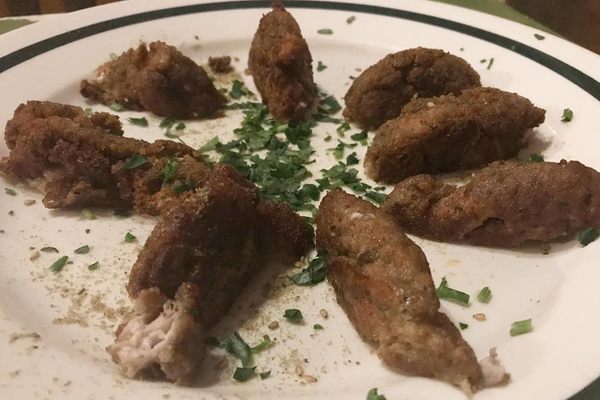In the mid-nineties, a team of brewers and archaeologists re-created a kind of beer that was imbibed by ancient Egyptians—and sold the thousand bottles they brewed at auction.
Textbooks typically illustrate ancient Egypt with hieroglyphics and carvings of war chariots. They don’t show paintings of royal retainers vomiting after drinking too much beer. But those are part of the historical record, too. In ancient Egypt, a good brew was a daily staple that transcended class lines: One preserved painting depicts Queen Nefertiti straining gruel out of her brew, while others show laborers guzzling beer. Dr. Barry Kemp, an archaeologist and Egyptologist from Cambridge University, even told The Ottawa Citizen in 1990 that “the pyramids were built on a diet of bread and beer.”
The ancient Egyptian brewing process was distinct from modern techniques. Kemp and other historians believed the process started with crumbling bread bits in water. The yeast in the bread would cause the liquid to ferment, resulting in a mushy, chaff-like substance. But in the mid-nineties, Kemp and Dr. Delwen Samuel excavated the site of a workers’ village and royal brewery affiliated with Queen Nefertiti. There, they discovered that the Egyptians’ brewing process was more complex and forward-thinking than they had anticipated.
Egypt’s dry climate—along with the practice of burying the dead with food and luxuries for the afterlife— made the analysis possible. By examining beer residue on pottery, Samuel found that Nefertiti’s brewers used a careful alchemy of malted grains (either barley or a type of wheat called emmer) to produce a smooth beer. Egyptologists had suspected that dates were used in the process, as they were in places such as ancient Sumeria, but Samuel found no trace of dates or similar flavorings.
Kemp and Samuel then took the unusual step of inviting Scottish and Newcastle Breweries to re-create a beer that’s been tucked away since Egypt’s pyramid-building days. The brewers investigated the characteristics of the water around the excavation site, but since they didn’t have detailed brewing instructions, they took liberties with their creation, which they dubbed Tutankhamun Ale. This included the addition of coriander, because ancient Egyptians used it in baking. The breweries produced 1,000 bottles of Tutankhamun Ale, which they sold for £50 each at Harrods in London.
Tutankhamun Ale is hardly an exact replica of what Nefertiti drank, yet beer lovers were nonetheless surprised by the golden brew. “It does not taste like any beer I’ve ever tried before,” Samuel noted. “It’s very rich, very malty and has a flavor that reminds you a little of chardonnay.”
Ancient Egyptians didn’t call their beer Tutankhamun Ale, but they clearly enjoyed it. The names they gave their beers included Joy Bringer, the Beautiful, and Heavenly.
Written By
 Alex Mayyasi
Alex Mayyasi
Sources
- www.nytimes.com/2013/03/17/opinion/sunday/how-beer-gave-us-civilization.html
- www.nytimes.com/1996/07/26/world/in-ancient-egypt-the-beer-of-kings-was-a-sophisticated-brew.html
- byo.com/hops/item/2150-tutankhamun-ale-story
- onlinelibrary.wiley.com/doi/10.2307/4015729/abstract
- "Tut's Curse a Hangover?" The Ottawa Citizen. February 25, 1990.














